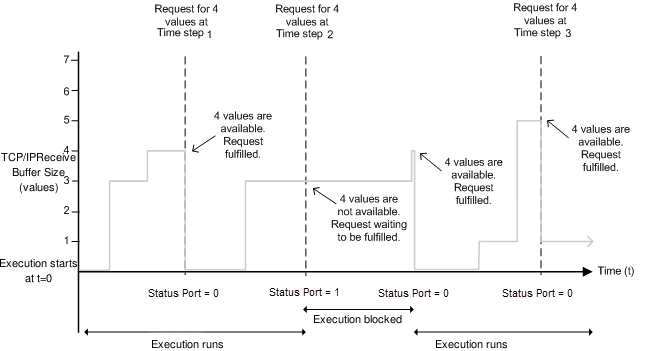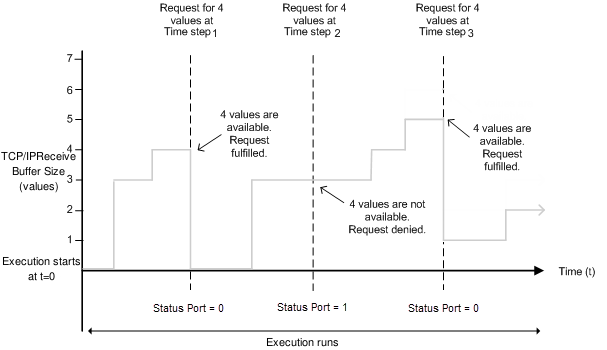TCP/IP Receive
Receive data over TCP/IP network from remote host
Libraries:
Simulink Coder Support Package for BeagleBone Blue Hardware /
Communication
Simulink Support Package for Android Devices /
Communication
Simulink Support Package for LEGO MINDSTORMS EV3 Hardware
Simulink Support Package for Raspberry Pi Hardware /
Network
Description
Receive data from a remote host/another target hardware over a network. When you set the connection mode as server, you must provide the local port. The local port acts as the listening port of the TCP/IP server. When you set the block as a client, you must provide the remote address and the remote port of the TCP/IP server to receive data. The block accepts data either in blocking mode or in non-blocking mode. The Data port output contains the requested data at each time step. The Status port contains 0 or 1 to indicate whether the new data at the specified time step is received. The Status port value 1 indicates that the data from Data port is valid.
In blocking mode, the model blocks the execution while it waits for the requested data to be available.

At time step 1, the block requests four data values, and the TCP/IP receive buffer gets four data values. The execution runs.
At time step 2, the block requests for data again, but the TCP/IP receive buffer gets only three data values. The execution pauses until the buffer receives the fourth data value or the time-out value elapses. Then, the execution resumes.
At time step 3, the block requests for data, and the buffer receives five data values. The block returns the first four data values, and the remaining data value is used in the next receipt cycle.
In non-blocking mode, the model runs continuously.

At time step 1, the block requests data, and the buffer gets four data values. The block changes the Status port value to 0, indicating that new requested data is available. The Data port, at this point, contains the newly received data values. The block resets the Data port value to 0.
At time step 2, the block requests data again, but the buffer gets only three values. The block cannot return a value of 3 because the data size is specified as 4. Therefore, the block sets the Status port value to 1, indicating that there is no new data. All values on the Data port become 0. The buffer, at this point, has three data values. However, during this phase, the execution does not stop unlike in the blocking mode.
At time step 3, the buffer has five data values, and the block returns the first four data values in the order received and changes the Status port value to 0. The remaining data value is used in the next receipt cycle.
